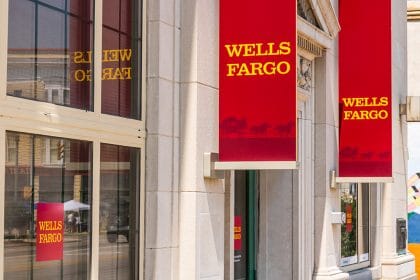Wells Fargo has changed the balance requirements for new clients to refinance a jumbo mortgage. This increases access difficulty.
Wells Fargo & Co (NYSE: WFC), the largest mortgage lender in the U.S., has raised its requirements for incoming clients to refinance a jumbo mortgage. The bank’s new clients are now expected to bring a minimum of $1 million to access this package. According to a CNBC report, the $1 million required is a 75% increase from the previous $250,000.
In the CNBC report, unnamed sources explained that the recent amendment was a part of a July 1 overhaul of lending guidelines released by the bank. Apart from reducing chances for jumbo finances for existing customers, the change will make it more difficult for new customers to qualify.
Wells Fargo Suffers from Global Pandemic
With the recent move by Wells Fargo, it is evident that the impact of the coronavirus pandemic is beginning to tell on the company. Before now, the bank has been subject to an asset cap imposed by the Federal Reserve. This decision by the Federal Reserve was as a result of a fake-account scandal involving the bank in 2016.
Before now, many lenders such as JPMorgan Chase & Co (NYSE: JPM) have tightened mortgage credit in response to the global health crisis. In May, Wells Fargo announced a development to limit its jumbo mortgage program due to the coronavirus pandemic. The mortgage lender said it will only refinance jumbo mortgages for customers who have $250,000 worth of liquid assets.
However, the bank recently released an “expansion of guidelines” that overruled the $250,000 requirements for existing customers. Before June ended, customers who had a mortgage with the bank and those who had a brokerage or the bank’s account were granted access. The company’s spokesman Tom Goyda said in an emailed statement to CNBC:
“The changes we implemented on July 1 substantially increased the number of borrowers from which we’ll accept applications for non-conforming refinances.”
Also, in May, Wells Fargo joined JPMorgan in a temporary freeze on applications for home-equity lines of credit (HELOC). Tom said the suspension from accepting applications for HELOC would it can plan for post-pandemic economic recovery:
“The decision to temporarily suspend the origination of new HELOCs reflects careful consideration of current market conditions and the uncertainty around the timing and scope of the anticipated economic recovery.”
WFC Struggle
Wells Fargo is currently experiencing some difficulty in its performance. Just last month, the bank announced that it will reduce payable dividends in its quarterly earnings report. The bank also plans to set aside billions for loan losses.
One of the unnamed sources in the CNBC report pointed out some changes in the July 1 overhaul. The source said that the bank tightened lending requirements in its mortgage business by reducing property value loans by 5%. It also increased the required amount of cash clients need to have on hand after purchasing a home. This is called a “post-closing liquidity requirement.”
With a loss of 26.78% in the last three months, Wells Fargo is presently trading at $24.49. This is, however, a 1.88% increase over the previous close of $24.04. The company’s stock lost over 4% earlier in the year, after releasing its Q1 report.
next